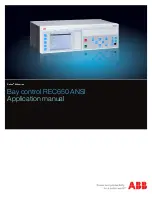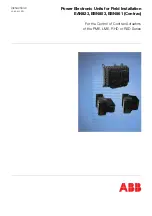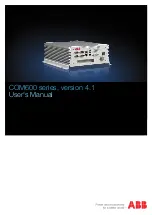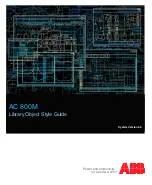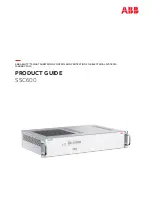
37
STAGED HEATING — The Staged Heating function is used
for two-position valves or for electric heat (1 or 2 stages). The
staging function uses the heating submaster reference value
from the PID and compares it to the supply-air temperature to
calculate the required number of output stages to energize.
Number of Stages:Range
1 to 2
Default Value
1
Two-Position
Valve Logic:
Range
Normal/Inverted
Default Value
Normal
The outputs will send a signal to the device when turned on
if these configurations are set to normal. The device will be
sent a signal in the Off state if Inverted logic is applied.
For electric heat, a Time Guard is provided for the first stage
to prevent excessive cycling and premature contactor failure.
Once heating is active, a maintenance decision indicates that
heating is in effect. Also the heating capacity is then calculated
based upon the Supply Air Temperature, the Space Tempera-
ture, and a maximum supply air temperature limit of 140 F.
TWO POSITION DAMPER — The Two-Position Damper
configuration should be set to 1 if the fan coil controller is used
with a two-position outdoor air ventilation damper. The damp-
er control logic determines that if the fan is OFF, or the occu-
pancy status is Unoccupied or Biased Occupied, the damper
will be closed. If the fan is ON and the occupancy status is oc-
cupied, the damper will be open.
Two Position
Damper:
Range
NO/YES
Default Value
NO
INDOOR AIR QUALITY — The Indoor Air Quality set
points configure the CO
2
sensor for use with the zone control-
ler. The voltage and reference set points allow the zone control-
ler to interpret the voltage signal from the CO
2
sensor. The AQ
Low Voltage set point defines the lowest voltage that should be
read from the air quality sensor. The AQ High Voltage configu-
ration defines the highest voltage which should be read from
the air quality sensor. The Low Reference configuration de-
fines the value in parts per million which correlate to the low
voltage reading from the air quality sensor. The High Refer-
ence configuration defines the value in parts per million which
correlate to the high voltage reading from the air quality sensor.
AQ Low Voltage: Units
Volts
Range
00.0 to 10.0
Default Value
0.0
AQ High Voltage: Units
Volts
Range
00.0 to 10.0
Default Value
10.0
Low Reference: Units
None (Parts Per Million
implied)
Range
0 to 5000
Default Value
0
High Reference: Units
None (Parts Per Million
implied)
Range
0 to 5000
Default Value
2000
FILTER TIMER HOURS — The Filter Timer Hours config-
uration determines when the filter status will display a “Dirty”
alarm. When the Filter Timer Hours is configured to a value
other than zero and fan run time exceeds the value configured,
the filter status will display “Dirty” and a CCN alarm will be
generated. Setting the configured Filter Timer Hours value to
zero will disable the alarm condition. The value of the timer is
stored in EEPROM to protect it in the event of a power failure.
The value is stored every 24 hours. The value is multiplied by
100. For example, if the Filter Timer Hours is set to 6, the
“Dirty” condition would be generated after 600 hours of run
time.
Filter Timer
Hours:
Range
0 to 99
Default Value
15
CONDENSATE PUMP TIMER — The Condensate Pump
Timer configuration is used to set the amount of time which
must elapse, after the Condensate pump overflow contact clos-
es, before the fan will be shut down. Heating and cooling is dis-
abled and an alarm message is broadcast.
Condensate
Pump Timer:
Units
minutes
Range
1 to 60
Default Value
10
SPACE TEMPERATURE TRIM — The Space Temperature
Trim configuration is used to calibrate the temperature display
for a sensor that does not appear to be reading correctly.
Space Temperature
Trim:
Units
Delta F
Range
–5.0 to 5.0
Default Value
0.0
SUPPLY AIR TEMPERATURE TRIM — The Supply Air
Temperature Trim configuration is used to calibrate the temper-
ature display for a sensor that does not appear to be reading
correctly.
Supply Air
Temperature
Trim:
Units
Delta F
Range
–5.0 to 5.0
Default Value
0.0
Fan Coil Configuration —
The Fan Coil Configura-
tion screen allows the user to configure the functions of the fan
coil. See Fig. 41.
OCCUPANCY SCHEDULE NUMBER — The Occupancy
Schedule Number determines which Global Occupancy
Schedule that the zone controller will follow. A value of 64 dis-
ables global occupancy from CCN and will decide Occupancy
from its local schedule. A value of 65 and above will allow the
zone controller to follow the global occupancy schedule of the
number broadcast over CCN.
Occupancy Schedule
Number
Range
64 to 99
Default Value
64
GLOBAL SCHEDULE MASTER — The Global Schedule
Master setting configures the zone controller to broadcast or re-
ceive a global schedule. If set to Yes, the zone controller will
act as a global schedule master and its schedule will be broad-
cast to the CCN. If set to No, the zone controller will not broad-
cast a global schedule and it will receive the configured occu-
pancy schedule number.
Global Schedule
Master:
Range
No/Yes
Default Value
No























